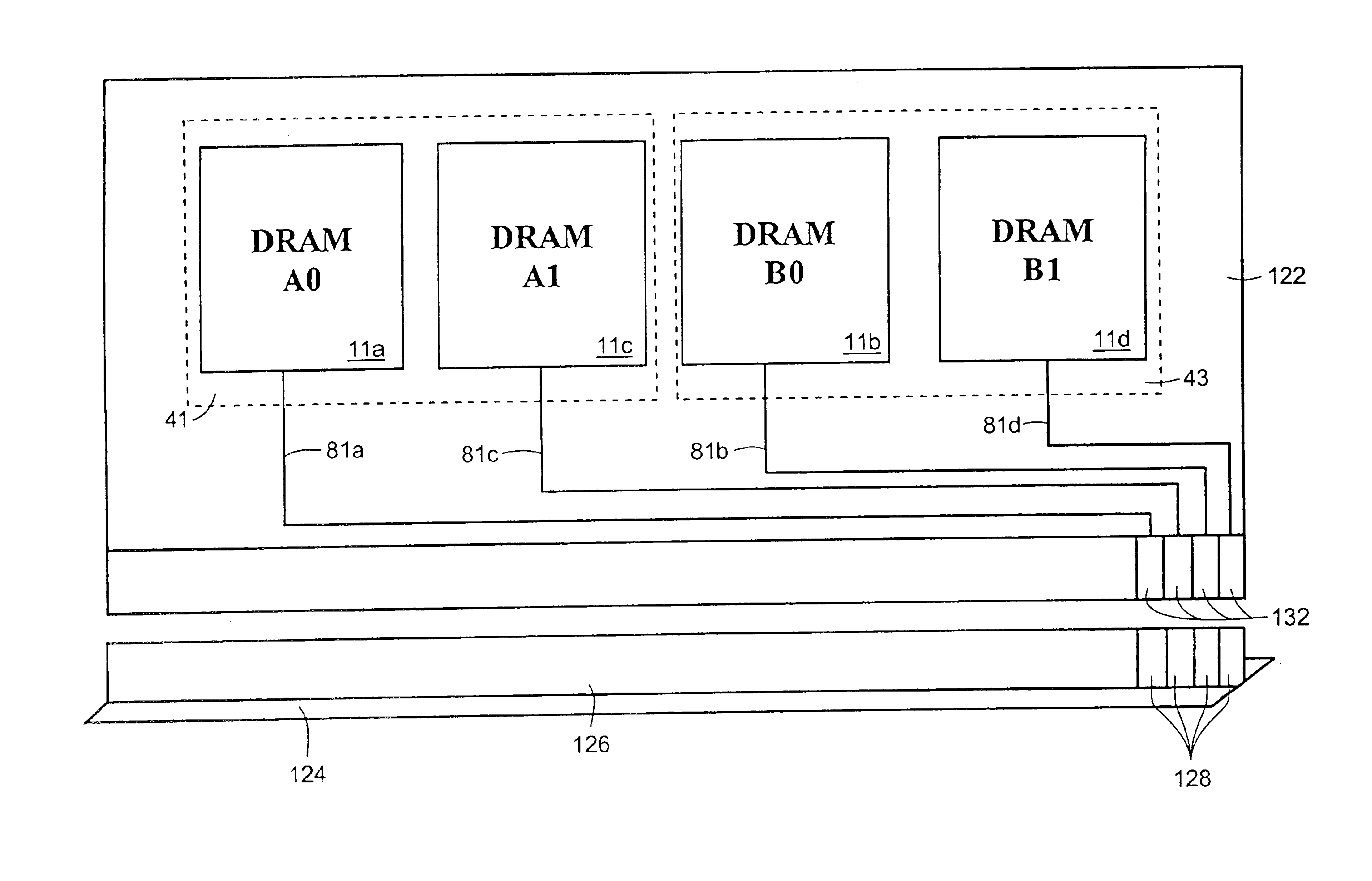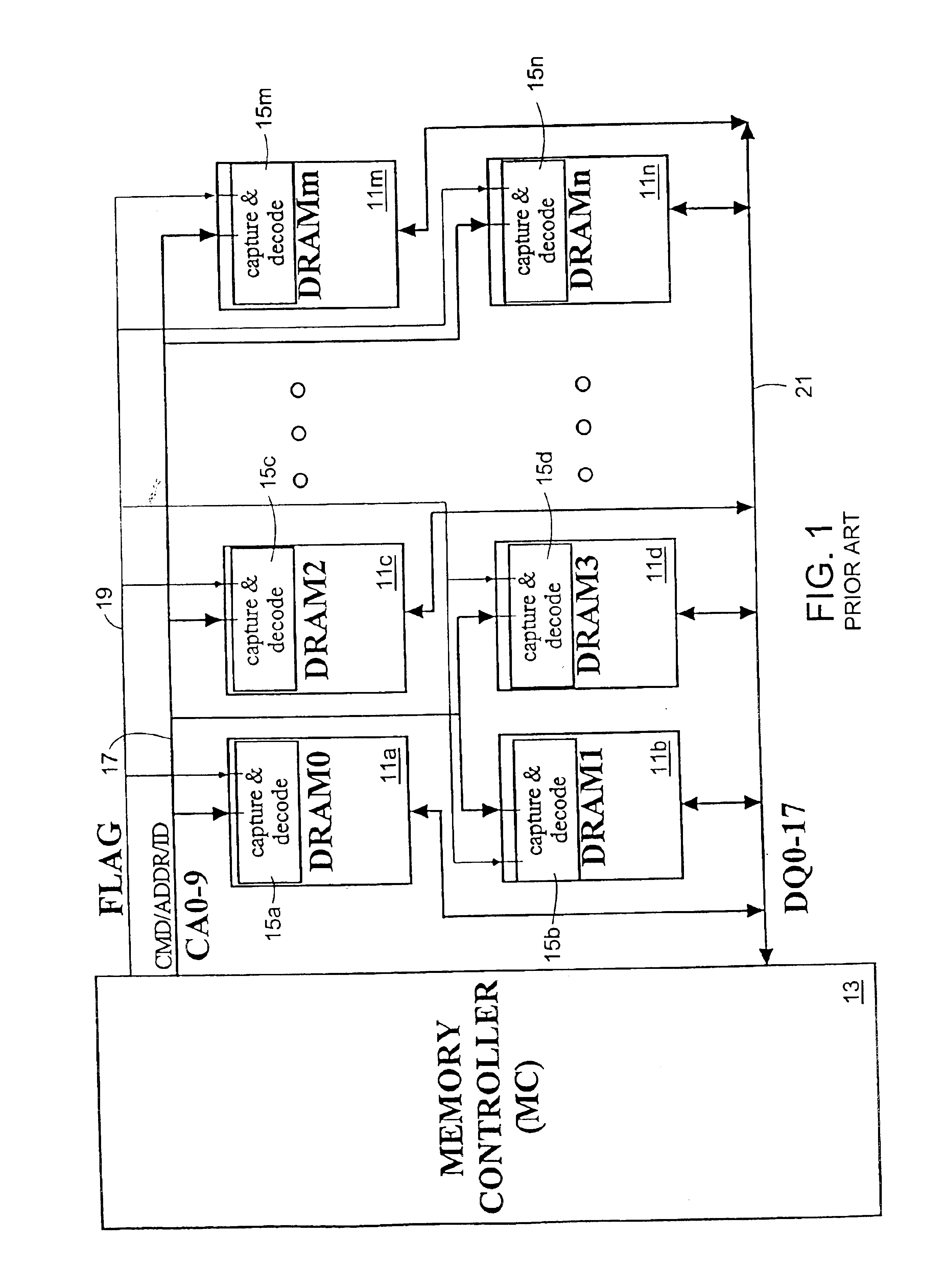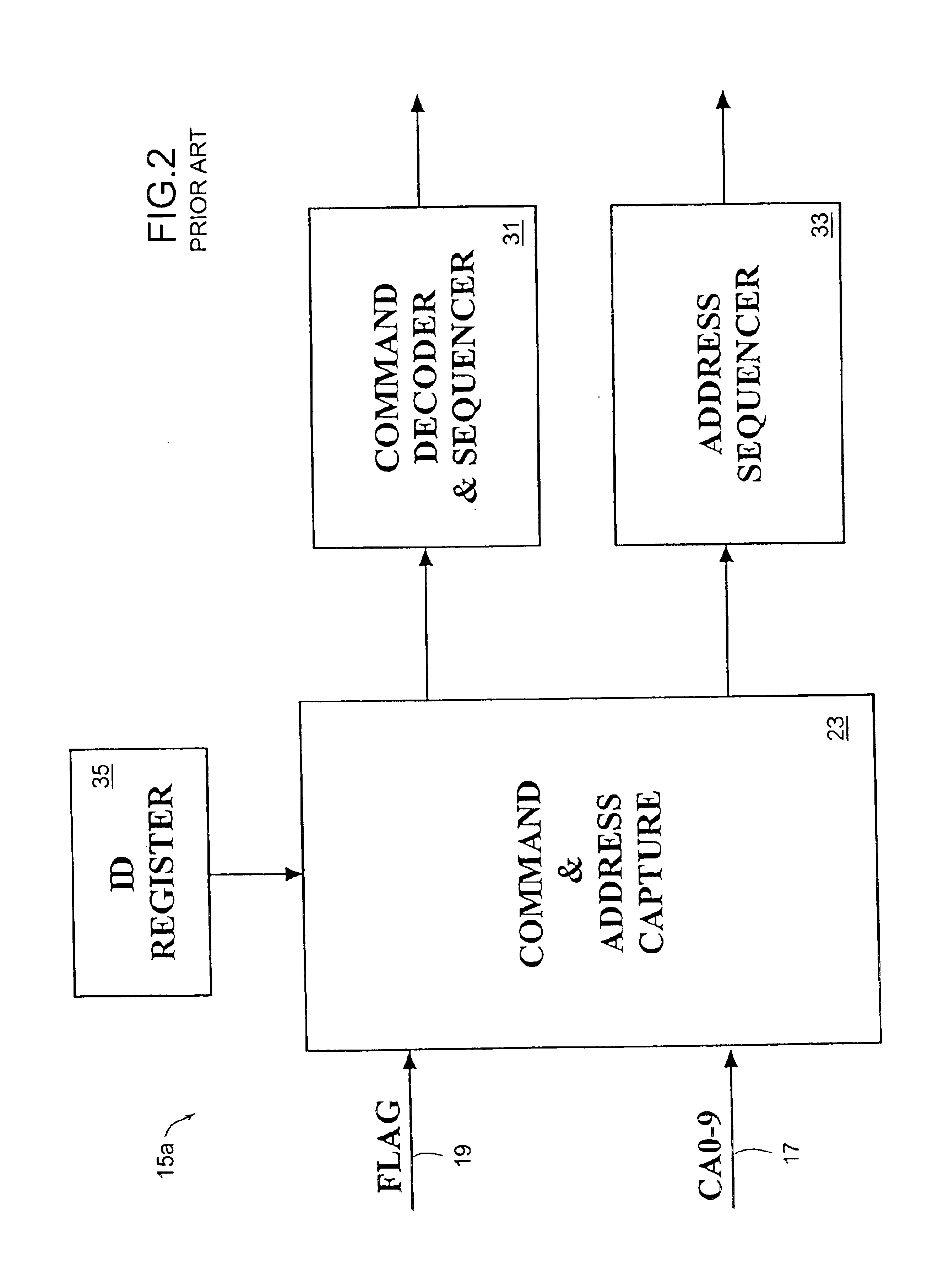Method for selecting one or a bank of memory devices
a memory device and selection method technology, applied in the field of selecting one or a bank of memory devices, can solve the problems of reducing efficiency, limiting current schemes, unnecessary power consumption, etc., and achieve the effect of preserving the ability to address an individual memory device and avoiding unnecessary capturing and decoding operations and associated power consumption
- Summary
- Abstract
- Description
- Claims
- Application Information
AI Technical Summary
Benefits of technology
Problems solved by technology
Method used
Image
Examples
Embodiment Construction
Before describing embodiments of the present invention, two prior art selection schemes will be described to illustrate differences between them and the present invention. Referring to FIG. 1, a block diagram is shown of an exemplary memory circuit that uses a prior art device selection scheme. Memory controller 13 is connected to memory devices 11a-11n (for example, “DRAMs”) by a command and address bus 17 (for example, the ten-bit-wide bus CA0-9) and by a bi-directional data bus 21 (for example, the eighteen-bit-wide bus DQ0-17). Also extending between the memory controller 13 and each memory device 11a-11n is a FLAG path 19. Within each memory device 11a-11n is a respective high-speed capture and decode circuit 15a-15n, which receives signals incoming on the command and address bus 17. An exemplary high-speed capture and decode circuit 15a is illustrated in FIG. 2 for memory device 11a.
Referring to FIG. 2, incoming command and address signals are received on command and address ...
PUM
 Login to View More
Login to View More Abstract
Description
Claims
Application Information
 Login to View More
Login to View More - R&D
- Intellectual Property
- Life Sciences
- Materials
- Tech Scout
- Unparalleled Data Quality
- Higher Quality Content
- 60% Fewer Hallucinations
Browse by: Latest US Patents, China's latest patents, Technical Efficacy Thesaurus, Application Domain, Technology Topic, Popular Technical Reports.
© 2025 PatSnap. All rights reserved.Legal|Privacy policy|Modern Slavery Act Transparency Statement|Sitemap|About US| Contact US: help@patsnap.com



